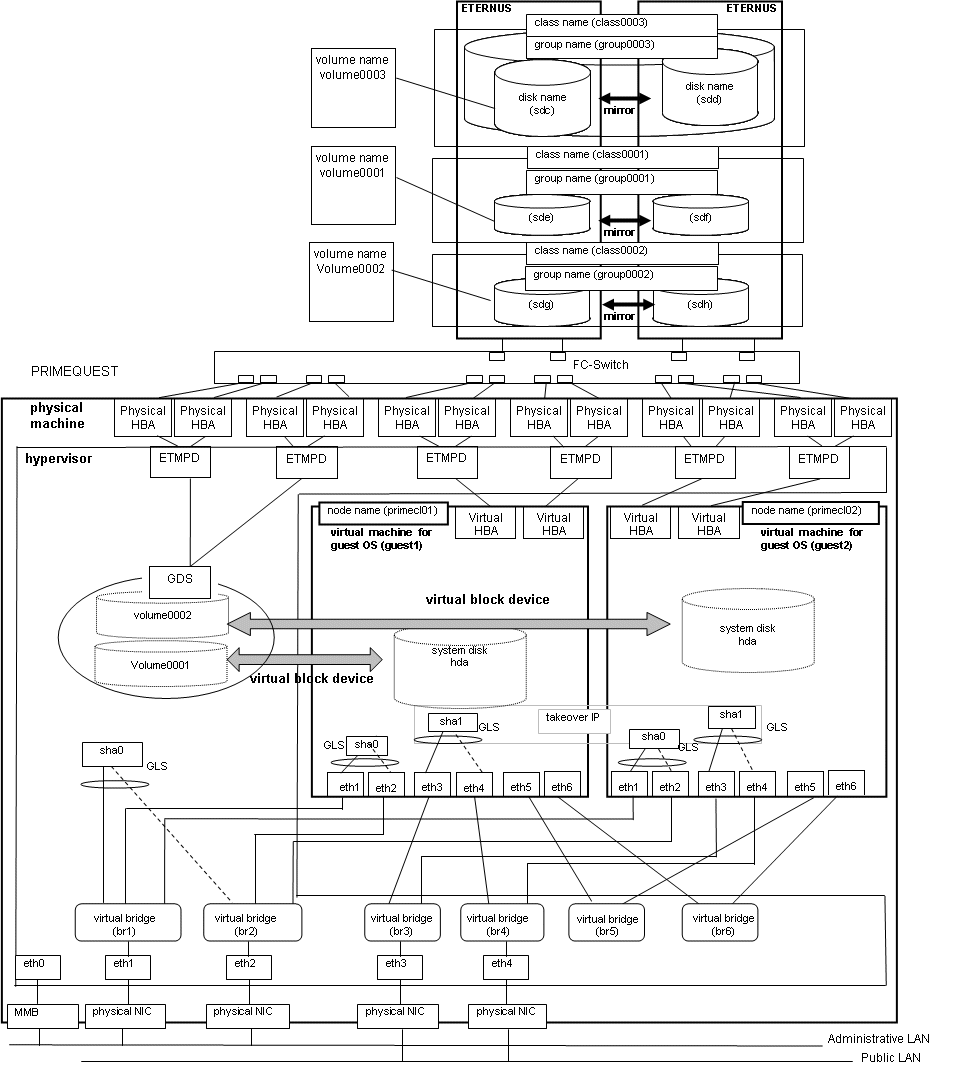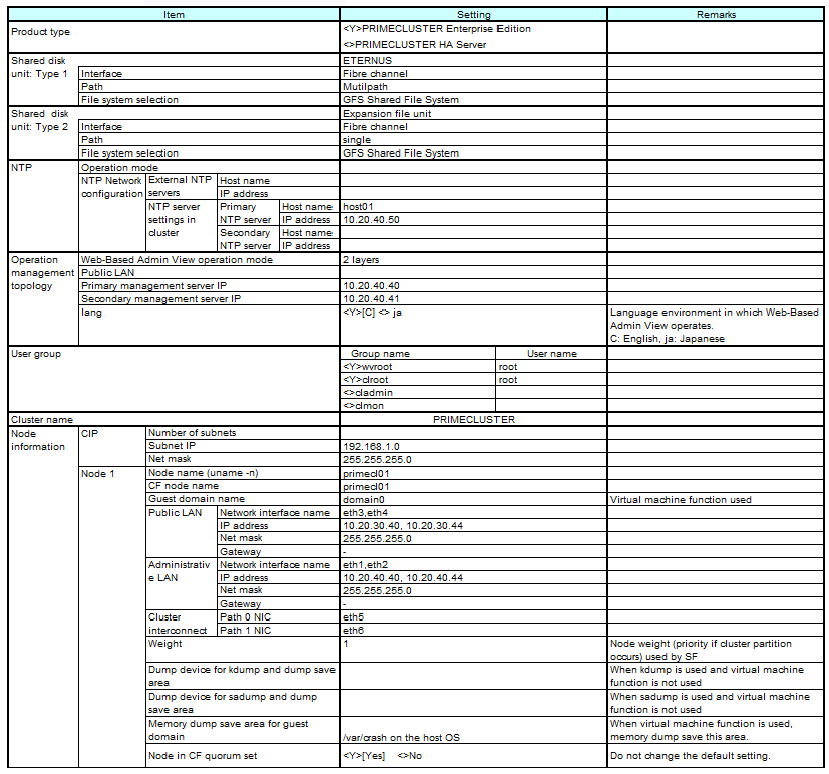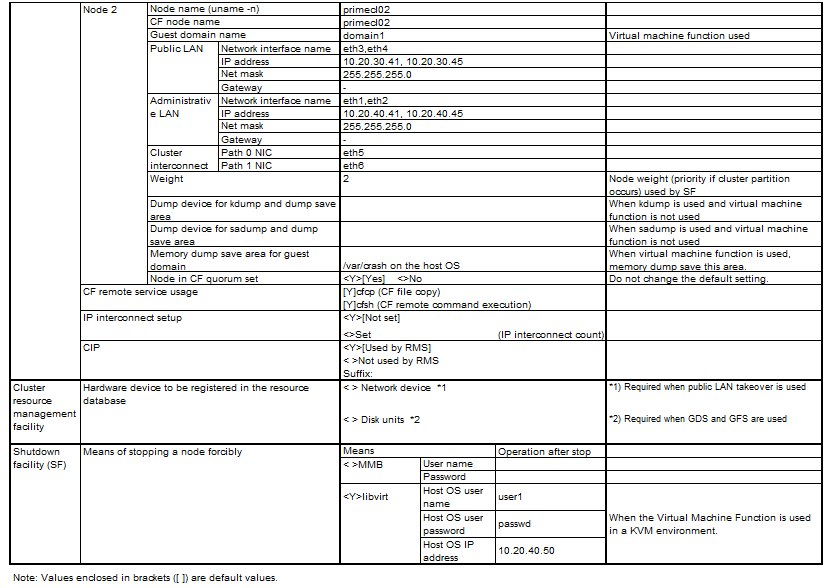System configuration

Note
Set the host OS as an NTP server and the guest OS as an NTP client, and then perform time synchronization.
If you want to use the system as a test environment, you can configure it so that the redundant administrative LAN is created on the guest OS by GLS. For information on how to create a redundant administrative LAN, see "PRIMECLUSTER Global Link Services Configuration and Administration Guide: Redundant Line Control Function."
Used hardware
PRIMEQUEST x 1
FC-Switch x 2
LAN card x 4
Fibre channel card x 8
Disk array unit x 2
Used software
Red Hat Enterprise Linux
PRIMECLUSTER 4.3
Multipath Driver
Microsoft Internet Explorer (installed on the operation management personal computer)
Java SE Runtime Environment latest version (installed on the operation management personal computer)
System disk settings
Node name | Virtual disk name | Slice number | Slice name | Size (MB) |
|---|---|---|---|---|
primecl01 | hda | 1 | / | 15374 |
2 | /boot/efi | 256 | ||
3 | swap | 2048 | ||
primecl02 | hda | 1 | / | 15374 |
2 | /boot/efi | 256 | ||
3 | swap | 2048 |
Note
If you want to mirror the system disk by using GDS, see "PRIMECLUSTER Global Disk Services Configuration and Administration Guide."
Shared disk array settings
Device name: | Number of LUN | Number of RAID groups | RAID level | Size |
3 | 3 | 5 | 248.2GB |
Note
The local class disks or shared class disks used by GDS on the guest OS should be created as virtual disks (virtio-SCSI devices or virtio block devices) if they are used in the virtual machine environment.
Shown below is an example of the Cluster Configuration Worksheet.


GFS: Global File Services
GDS: Global Disk Services
Shown below are examples of the GLS Setup Worksheet.
NIC switching mode (virtual IP Takeover)

GLS: Global Link Services
Shown below are examples of the GDS Configuration Worksheet.
Example. If disk mirroring is to be executed:
In this example, mirror group group0003, which consists of physical disks sdc and sdd, is created, and mirrored volume volume0003 is created in group0003.
